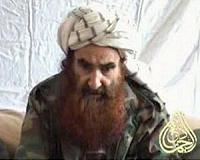| . |  |
. |
Panama City (AFP) Dec 20, 2009 Twenty years after the United States invaded Panama and captured dictator Manuel Noriega, many Panamanians say the intervention was a US move to remove a "hindrance" to its political agenda. The United States maintains that the invasion, which began on the morning of December 20, 1989 under US president George H.W. Bush, sought to depose general Noriega to bring him to justice for his role in international drug trafficking. Operation Just Cause left 500 dead, according to official figures. But Panamanian groups estimate the toll at over 4,000 civilians killed, and some analysts say the true US motives were different than those proclaimed. "I never believed the invasion took place because the general was linked to drug trafficking," political analyst Mario Rognoni, a commerce minister under Noriega, told AFP. "It was an open secret that he was working for US security." Miguel Angel Bernal, a vitriolic opponent of Noriega, said the former dictator had become "an embarrassment to the US political agenda" in Latin America and the Caribbean. A US Cold War ally and one-time CIA informant, Noriega eventually put Washington in a tight spot as his drug trafficking ties emerged. The United States has had a battered image in Central and South America, where it supported several coups and military governments during the Cold War in a bid to contain the grip of Communism over its southern neighbors. Noriega, who took refuge in the papal nunciature in Panama City for two weeks before surrendering, went from being an ally to becoming a "threat" to the United States, said analyst Carlos Guevara-Mann, who served under the government of Mireya Moscoso (1999-2004), Panama's first female president. "It has happened before with other figures and groups. Remember the Taliban (in Afghanistan) and Saddam Hussein (in Iraq): first allies and then enemies of America," added Guevara-Mann. Washington was concerned at the time by leftist guerilla groups operating in Central America; and by the Sandinista National Liberation Front, the socialist political party that had established a revolutionary government in Nicaragua. "The United States wanted to use Panama as a platform for the struggle against the Sandinistas, but when Noriega refused, they decided to overthrow him," said Julio Berrios, an attorney for Noriega who previously served as an adviser to the Panamanian government installed after the invasion. Despite his collaboration with the United States on several fronts, Noriega "was very independent and decided to rebel one day in 1986 in Japan, where he denounced the war policy in Central America," said former diplomat Julio Yao. Some experts have linked the invasion to Bush's efforts to achieve the same kind of popularity as fellow Republican and predecessor Ronald Reagan. "America could have eliminated or kidnapped Noriega," said scholar Marco Gandasegui. But Bush allowed the invasion "to be broadcast 24 hours a day on television to show he was a strong and determined man capable of making decisions," he explained. "And the United States presented itself as the world's sole superpower after the fall of the Berlin Wall" a few weeks before, he added. US forces took Noriega to Miami, where he received a 17-year prison sentence for drug trafficking and money laundering. But the former strongman still languishes in a US prison since completing his sentence in 2007. He is awaiting a decision by US courts on whether to return him to Panama or extradite him to France, where he faces trial on money laundering charges. He also has legal troubles in Panama, where he faces prosecution over the disappearances and murders of opposition members. Share This Article With Planet Earth
Related Links Learn about the Superpowers of the 21st Century at SpaceWar.com Learn about nuclear weapons doctrine and defense at SpaceWar.com
 Outside View: Jockeying for influence
Outside View: Jockeying for influenceHelsinki, Finland (UPI) Dec 18, 2009 The Obama administration's decision to begin withdrawing troops from Afghanistan in 18 months after the start of the surge has already begun to bear fruit, but perhaps not in a way that was intended. The strongest Taliban warrior in Afghanistan, Siraj Haqqani, whose fighters pose the biggest threat to U.S. forces, remains protected by Pakistan in a sanctuary in North Waziristan. ... read more |
|
| The content herein, unless otherwise known to be public domain, are Copyright 1995-2009 - SpaceDaily. AFP and UPI Wire Stories are copyright Agence France-Presse and United Press International. ESA Portal Reports are copyright European Space Agency. All NASA sourced material is public domain. Additional copyrights may apply in whole or part to other bona fide parties. Advertising does not imply endorsement,agreement or approval of any opinions, statements or information provided by SpaceDaily on any Web page published or hosted by SpaceDaily. Privacy Statement |